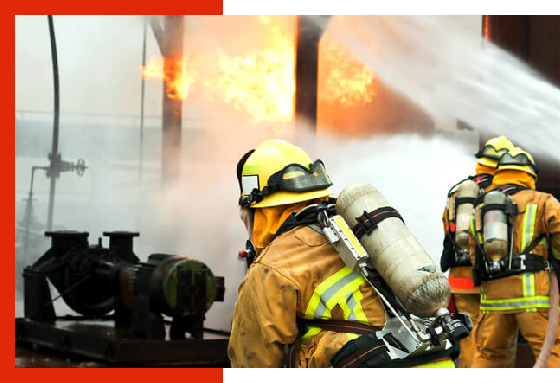When it comes to workplace safety, few tools are as instantly recognisable as the red fire extinguisher mounted on the wall. But while it’s easy to spot, it’s often forgotten—until the moment it’s needed most. The truth is, a fire extinguisher that hasn’t been properly maintained is little more than a decoration. That’s why fire extinguisher testing is such a vital part of workplace safety and overall fire protection.
Regular testing not only ensures that extinguishers are in working order but also provides confidence that they’ll perform when seconds count. Far from being a compliance chore, it’s a life-saving measure that protects people, property, and peace of mind.
Why Fire Extinguisher Testing Matters
A fire extinguisher may look ready, but appearances can be deceiving. Over time, extinguishers can lose pressure, become corroded, or even go missing altogether. Imagine discovering one isn’t working in the middle of an emergency—that’s a risk no business can afford.
Fire extinguisher testing ensures:
- Immediate reliability – Your extinguisher will work the moment you need it.
- Legal compliance – Testing aligns with Australian Standards and workplace safety requirements.
- Problem prevention – Issues like leaks, blockages, or damage are identified early.
- Confidence for staff – Employees know they can trust the equipment around them.
Without regular testing, extinguishers become a gamble rather than a guarantee.
The Bigger Picture of Fire Protection
Fire extinguishers are an essential part of fire safety, but they’re just one piece of the puzzle. True fire protection requires a layered approach—multiple systems working together to prevent, control, and manage fire risks.
This includes:
- Extinguishers tested and ready for use.
- Clearly displayed fire evacuation diagrams so staff and visitors know how to exit safely.
- Reliable emergency and exit lighting for visibility in low-light conditions.
- Fire alarms, sprinklers, and hydrants to provide early warning and suppression.
When combined, these elements ensure a safer workplace where both prevention and response are accounted for.
What’s Involved in Fire Extinguisher Testing?
Some see testing as a simple tick-the-box activity, but the process is much more detailed. Qualified technicians follow strict Australian Standards (AS 1851) to ensure every extinguisher is ready for action.
A typical inspection involves:
- Visual inspection – Checking for dents, rust, missing pins, or tampering.
- Pressure and weight checks – Ensuring the extinguisher has the correct pressure and charge.
- Hose and nozzle check – Confirming nothing is blocked or damaged.
- Tagging and logging – Attaching a dated tag and updating service records for compliance.
Most extinguishers are tested every six months, but high-risk environments may require more frequent checks.
Risks of Skipping Regular Testing
Neglecting fire extinguisher testing might seem harmless, but it carries serious risks. Common issues found during inspections include:
- Extinguishers that fail to discharge.
- Low-pressure units that can’t deliver a proper spray.
- Corroded cylinders that are unsafe to use.
- Units blocked by furniture or equipment, making them inaccessible.
Beyond the safety risks, failing to maintain extinguishers can result in hefty fines and legal consequences for businesses. More importantly, it could put lives in jeopardy.
Fire Evacuation Diagrams: The Perfect Partner
Even with perfectly tested extinguishers, a workplace isn’t fully protected without a fire evacuation diagram . These diagrams provide clear instructions on escape routes, assembly areas, and extinguisher locations, ensuring that everyone knows what to do in an emergency.
Paired with tested extinguishers, evacuation diagrams:
- Reduce panic by giving people clear direction.
- Ensure faster and safer evacuations.
- Highlight the location of essential fire protection equipment.
- Support compliance with safety regulations.
Together, they create a practical framework for both fighting and fleeing from fire.
Building a Safety-First Culture
Fire safety is not a once-a-year task—it’s a continuous commitment. By making fire extinguisher testing Thomastown and evacuation planning part of regular operations, businesses show their employees that safety is a priority.
Ways to strengthen fire safety culture include:
- Running regular fire drills so staff are confident in evacuation procedures.
- Encouraging staff to report damaged or missing equipment.
- Keeping fire evacuation diagrams up to date and visible.
- Partnering with professionals to manage all fire protection needs.
This proactive approach reduces risks, saves lives, and builds trust across the workplace.
From Forgotten to Reliable
Fire extinguishers may quietly sit in corners or hang on walls, but their role is powerful. With routine fire extinguisher testing, these overlooked devices transform into dependable safety tools, always ready to act when needed.
By combining extinguisher maintenance with a broader fire protection strategy—including evacuation diagrams and staff training—you create a workplace where safety is not left to chance. Instead, it becomes a built-in safeguard against the unexpected.
Final Thoughts
Neglecting fire extinguishers is a mistake no business can afford to make. Regular fire extinguisher testing is not just about compliance; it’s about ensuring that when fire strikes, your equipment performs without fail. When paired with strong fire protection measures and clearly displayed fire evacuation diagrams, testing provides complete peace of mind.
Don’t wait until an emergency reveals gaps in your fire safety. Protect your people, your property, and your future by keeping extinguishers tested, tagged, and ready for action.
👉 Contact Australia Fire Protection today to book your fire extinguisher testing service and discover how our complete fire protection solutions—including evacuation diagrams and workplace safety planning—can keep your business safe, compliant, and prepared.



